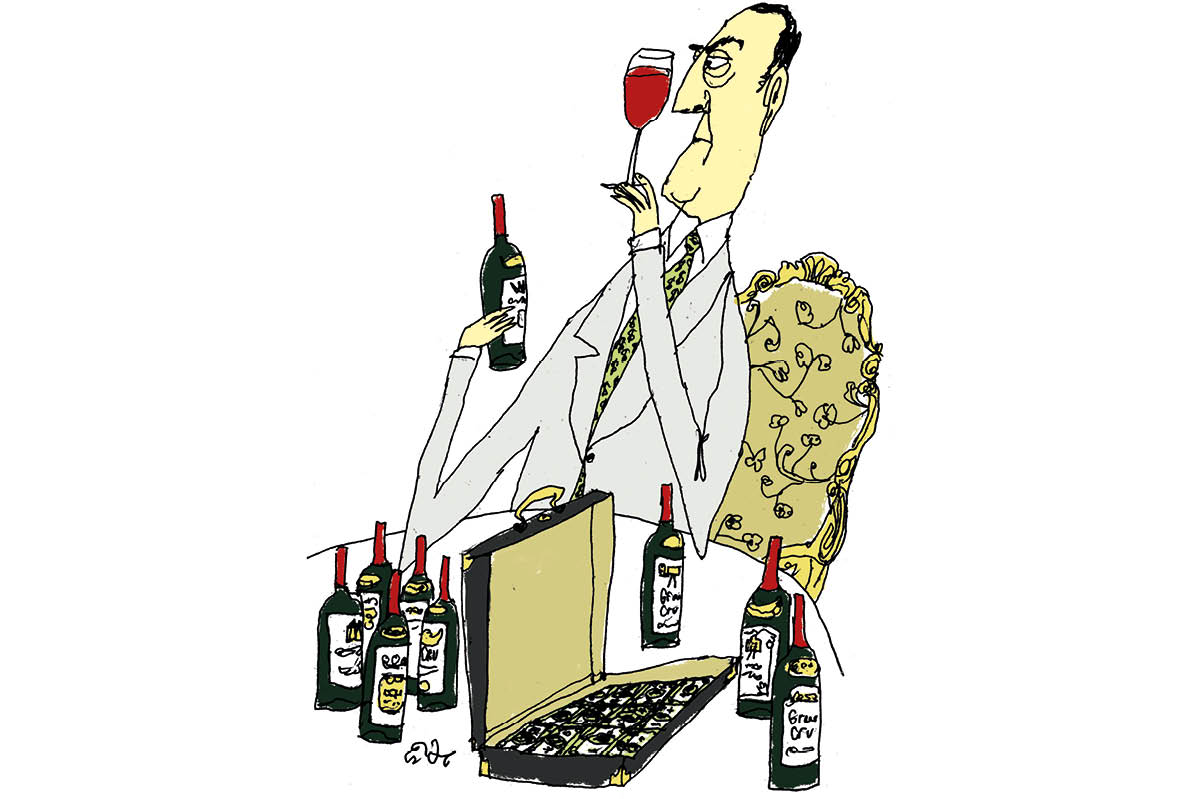Wine Collecting: Billionaire Frenzy
Kathleen Willcox at The Spectator


Are the rich different from you and me as F. Scott Fitzgerald posited in 1926? Or do they just have more money, as Ernest Hemingway allegedly retorted?
Whatever the answer, they’ve certainly become wealthier. While many of us normies have been sweating fallout from inflation and skyrocketing interest rates — buying a dozen eggs, never mind a new home, requires major budget adjustments — we can take comfort that at least the 0.001 percent are doing fine. According to the latest Oxfam International Inequality Report, the five richest men in the world have doubled their fortunes since 2020 — from a measly $405 billion to $869 billion. What do they sip as they stroke their fat white purebred cats atop piles of gold? It’s wine you won’t find at a store.
“A lot of the billionaire clients I have approach wine collecting as almost an obligation,” says Melissa Smith, founder of wine appraisal service Enotrias, alluding to the broadly accepted notion that of course the ultra-rich must, if not drink, at the very least collect the very finest. “They hoard it and get tied up in the frenzy of an allocation as soon as it’s offered. But here’s the thing: a lot of the wines they’re buying won’t even be in proper drinking range until these people are in their nineties.”
The world of wine collecting is deliberately opaque. It’s not just about owning the right bottles, and enough of them, but knowing who to buy them from and convincing them that you’re worthy of their vino.
“In the end, the wine business has always been a relationship business,” Smith says. “The most collectible wines never hit retail shelves. Some are sold from the producer directly to individual collectors, while others go through a very small circle of importers, distributors and retail shops.” Gaining access to the best, ultra-expensive cuvées is often a matter of long-term effort, in addition to raw spending power, in part because finding this wine at all is no easy feat either. Fine wine distributors and retailers often make large purchases of ultra-rarities on the gray market — typically from Asia or the UK.
“Then salespeople at places like J.J. Buckley or K&L Wine Merchants go through their rolodexes and figure out how many bottles or cases they can offer the select collectors they work with,” Smith explains. “And that sense of scarcity and the mystery of not knowing how many bottles are available is part of the thing that drives the frenzy.”
Mannie Berk, founder of The Rare Wine Co., has watched the frenzy build over decades. “I have been working in wine since 1982,” Berk says — widely considered to have been one of the greatest modern years for wine. The climate had been kind on terroirs across the world, and during the same year, Americans clued in to the glorious bounty of Bordeaux. Prior to 1982, he says, buying a case of Domaine de la Romanée-Conti or Pétrus upon release was possible, even if you weren’t a member of a major royal family, A-list celeb or a business titan.
Read the rest (subscription probably required)





